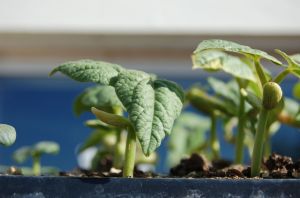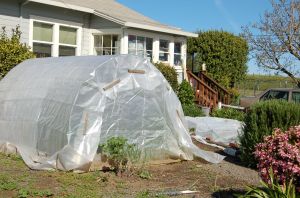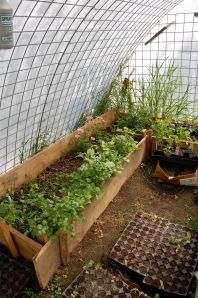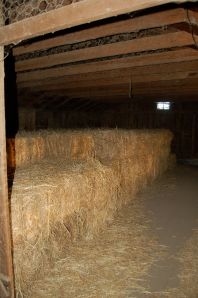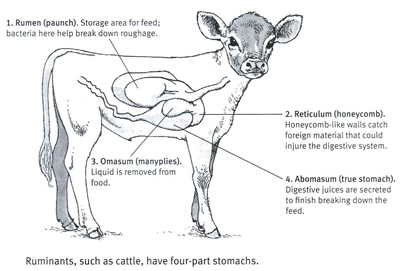In La Jolla, San Diego (yuppie-ville to the MAX), at the hugely popular farmer’s market, I made the mistake of asking the gentleman who was selling farm eggs, if they had been refrigerated.

Several Hens use the same nest
He lit into me,“You crazy americans, why do you want to refrigerate your eggs! We NEVER do.”
After a minute or so of this tirade he wound down, and I said to him, “I just wanted to make sure they had NOT been chilled”. His feathers no longer ruffled, we exchanged dollars for eggs and I went on my way… amused that he was so fanatical about the issue, but understanding totally where he was coming from.
It’s amazing that all of Europe is not dead or dying considering they consume raw milk and eat eggs that have NOT been refrigerated. And eat fresh veggies and meat that don’t have a USDA approved stamp on them. OMG, don’t they understand how dangerous they are living.. .
uh, wait… I think,.. yes, didn’t I just hear… now… they live longer… and healthier than us americans. With much lower obesity rates, heart disease, or diabetes. What are they doing different? How can that possibly be?
But back to the eggs…
Obviously 100 years ago they did not put eggs in the fridge. What changed? Why were eggs suddenly going “bad” if they were not retrieved twice a day and immediately washed and put in the fridge?
A little biology… eggs stay fresh enough kept at room temperature (warmer and cooler than that actually) for a minimum of two weeks and probably longer than that. At least fresh enough for a broody hen to collect her eggs (i.e. lay them) over a two-week period, and THEN start to “set” on them.

Chicks hatching over two days
They are fresh enough to develop into quite healthy little chicks. I’ve actually seen them do that! Just amazing.
After two whole weeks, without being washed or put in the fridge!
When an egg is laid it has a coating called “the bloom” which is anti-bacterial in nature, and helps protect the future embryo.
When we collect the egg and wash it, we actually remove that protective layer.
Eggs are then placed, in the industrial industry, in a fridge because now the egg DOES need to be protected… and chilling it prevents bacterial growth.
Eggs are an excellent media for bacterial growth… they use them to grow vaccines, etc., in the medical world. If eggs are washed they are at risk of being infected with bacteria. Hot water, opens the pores the of egg… and each egg has 3-6,000 pores that enable a chick to exchange O2 & CO2 while it is developing. Those pores now become “freeway systems”.
And what does putting the eggs in the fridge do, washed or not washed? The egg is chilled and when taken out of the fridge moisture condenses on the shell (basic physics here). That moisture can conduct bacteria.
Salmonella bacteria endemic in the commercial populations
Commercial eggs, even so-called free-range, cage-free, pastured (those descriptions have been

Cage-Free Hens, commercial style
pretty much co-opted by the egg industry) are raised in huge numbers (up to 20,000 hens in a laying house). They are collected, washed, packed, and chilled to go to market. Commercial eggs are fighting an ongoing battle with Salmonella while getting their eggs to market. Markets that can be hundreds of miles away… and if the trucks were NOT refrigerated, the temps in the summer could get very, very high. High enough, long enough, to trigger the deterioration of the egg itself, or incubate bacterial growth.
I can’t imagine the industrial costs to do all this… a refrigerated truck? But they MUST do it, because the risks are so high.
Farms that have 50,000 thousand laying hens (yes, 50,000 or MORE) must follow specific rules to decrease the risk of Salmonella bacteria, in their eggs. Some 600 hundred farms were to be inspected in 2010-11 . Salmonella is endemic in the commercial egg production population. Egg products (yolk, white, etc), with the shell removed, must be pasteurized. Some large egg producers are fighting the salmonella problem by pasteurizing ALL their eggs (shell & all).
You should NEVER eat commercial eggs unless they have been well cooked, to protect your family. My mother would get sick even if the eggs were cooked… G.I. upset every time. We finally figured out she could eat real farm eggs without any problems. Every time she came to my house, she could eat the eggs, without later running to the ladies’ room.
Down on the Farm
What do I do if I get an egg with “stuff on the shell”? I wipe it off gently.
If it’s totally yucky I wipe if off with a damp room temperature dishcloth, and use it ASAP. If I’m really short on eggs (think winter)… those eggs I might put in the fridge and use them immediately, when I take them out. I would NOT take a whole carton of eggs out, put them on the counter for a while, and then put them BACK into the fridge. Not if that protective bloom has been removed.
Actually, in my setup for the most part, the eggs would go into the pig bucket because they are extremely high in nutrition and are prized for the food value they give our pigs.
At our house, we keep things pretty basic. Eggs are collected, kept at room temp, dusted off but generally NOT washed. Any suspect eggs (very dirty or cracked) go to our pigs. NO WASTE, I just love it!

Teaching the chicks, finding food!
Our hens also get their real diet…. i.e. NOT vegetarian. They run around freely, for the most part (to the dismay of a neighbor occasionally) and eat bugs, worms, etc. as well as a layer feed. They choose. We do protect garden areas, or a neighbor, by putting up an electric net that encourages them to go elsewhere. They could jump the fence if they wanted to, but for the most part choose to meander where it’s easy to go.
Backyard Chickens are the way to go!
I encourage everyone, raise your own hens! They are great waste disposals; eat just about everything, give you fertilizer and eggs. You don’t have to have a rooster (hens still lay, just the eggs won’t hatch!). Put down a bed of straw to absorb any odors. It makes a great garden amendment when it breaks down, along with the fertilizer mixed in, from the hens.
If a hen goes broody, let her set on her infertile eggs and after a couple of weeks trade them out. At night, slip some chicks from the local feed store, under her and let her raise them up. GREAT entertainment and fun for kids, dads, moms, & neighbors.
It’s incredible how good fresh eggs are… commercial eggs are a bland watery substitute for real food. Can’t raise your own… seek out a local farmer who is and support them. You will get much more for your food dollars, I assure you!
